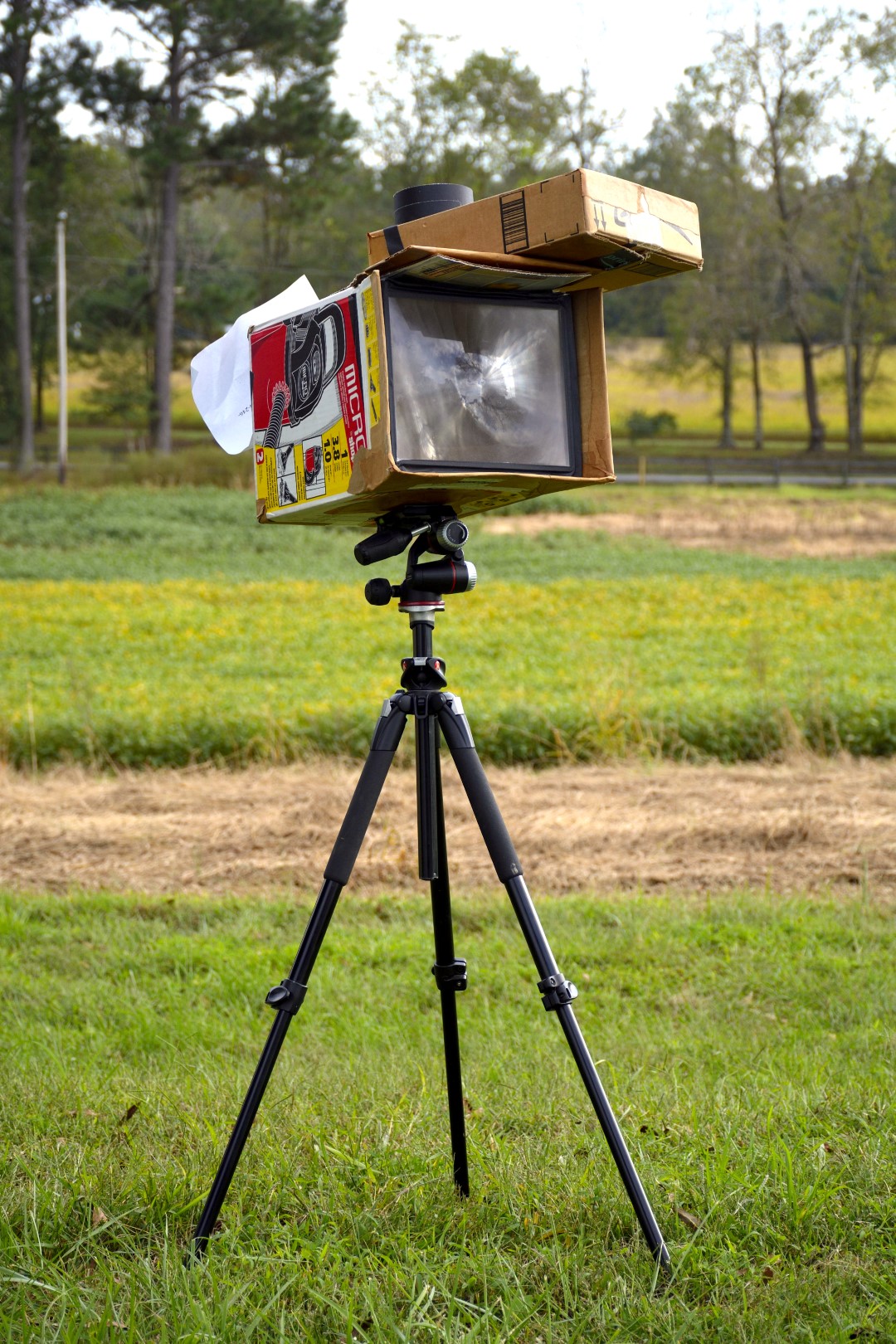Here’s how to make a simple sliding box camera that takes long-exposure photos on cyanotype paper that’s normally used for blueprints or “sun prints.” The paper can be easily developed at home in a bathroom sink. It’s a fun way to really, physically see what’s happening in a camera. It’s an inexpensive project, and it produces wonderfully spooky UV images.
Before you build your camera, play with the cyanotype paper. Do some experiments with the sun print kit and see how the paper works in direct sunlight. Explore UV exposure by writing with sunscreen on the included acrylic sheet and placing that over the paper. Become familiar with developing the paper, and try using drugstore hydrogen peroxide to speed the oxidation process after development.
Materials
- Lens either a large magnifying glass lens or a Fresnel lens
- Cardboard boxes
- Cyanotype paper I use the Super Sunprint Kit from Lawrence Hall of Science, Amazon #B001KOGY3M or American Science & Surplus #93519P1.
- Tape I recommend gaffer’s tape.
Optional:
- White glue such as Elmer’s
- Paper
- Hydrogen peroxide, 3%
Tools
- Box cutter
- Ruler
Optional
- Paintbrush and bowl, or spray bottle
- Scanner if you want to create sienna- or sepia-tone positive images



